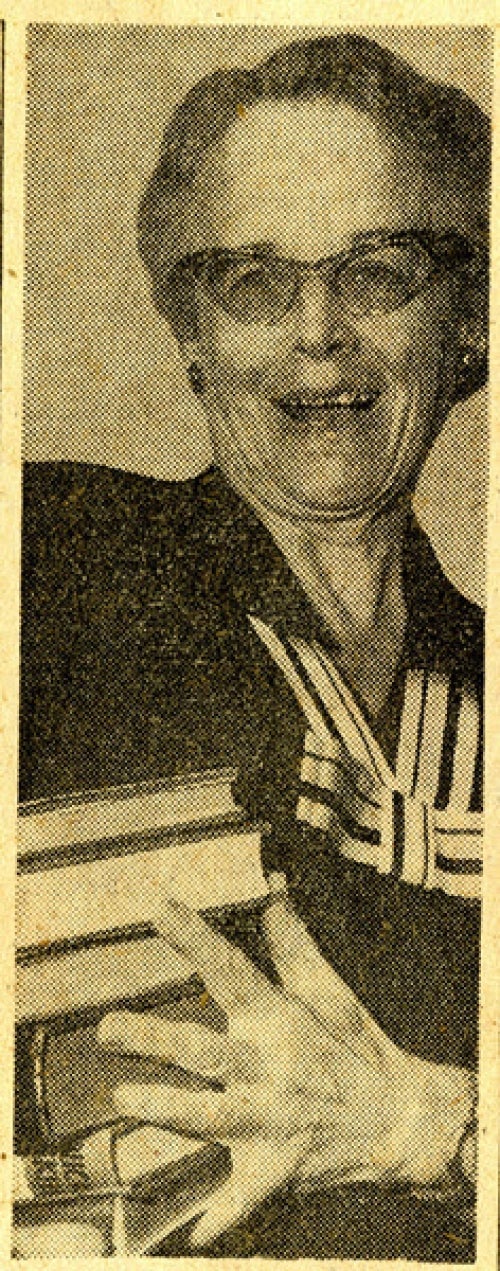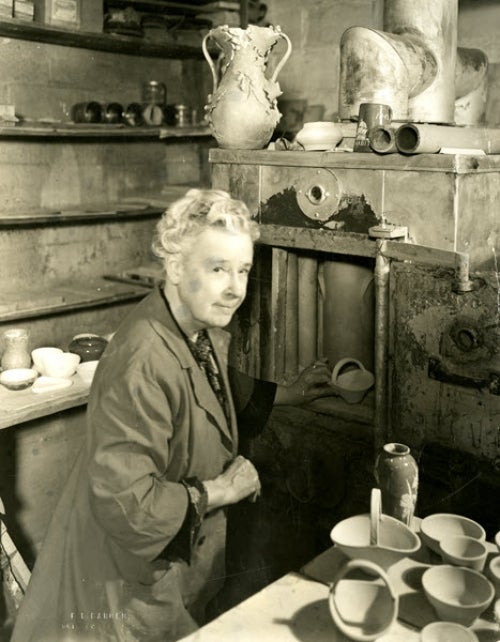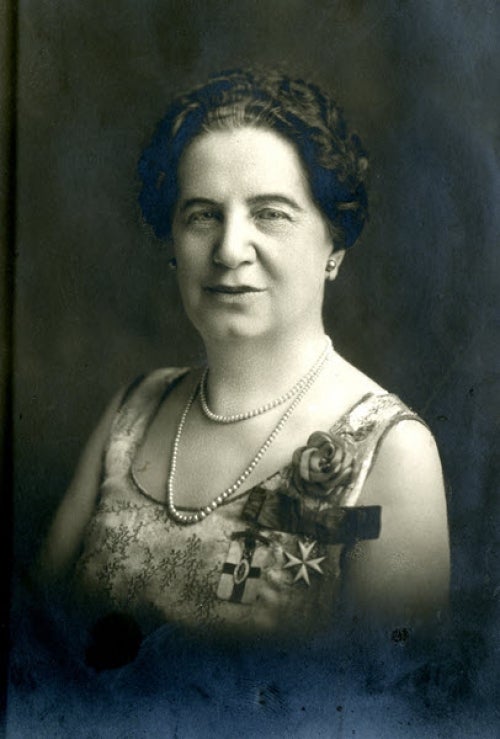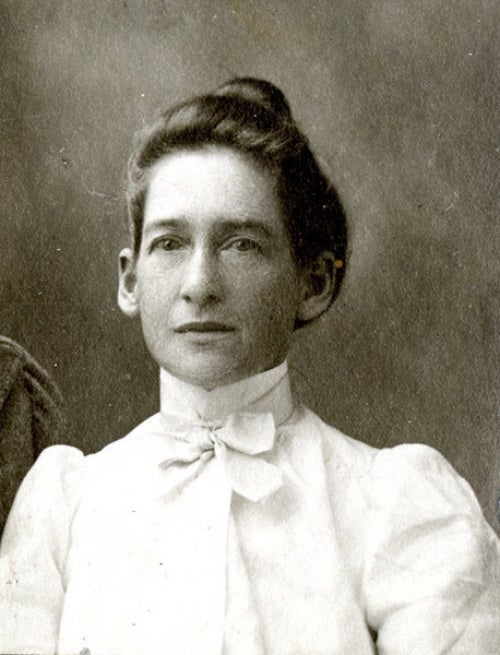Dana Porter Library, first floor
University of Waterloo Library
Waterloo, Ontario N2L 3G1
519-888-4567 x42619 or x42445
Features from the Lady Aberdeen Collection
-
 Elizabeth Long: She curated much of the Lady Aberdeen collection over the course of about 10 years, but that was only after her retirement. Before that, Elizabeth graduated from the University of Manitoba with an MA in English, then she went on to work as a reporter, and later an editor. She became the president of the Canadian Women’s Press Club in 1925. In 1938, she began working as the supervisor of Women’s Interest programs for the radio, making Elizabeth the first female executive at the CBC. She was often an outspoken woman amongst her many male colleagues. Elizabeth wanted her commentators to speak about current events and issues, and how those would affect women, not about light issues like music and fashion. She taught her protégés to communicate more colloquially in order to connect better with their listeners, which they called “Elizabeth’s formula”. You can read more about Elizabeth Long’s experiences at the CBC in Beyond Bylines: Media Workers and Women’s Rights in Canada by Barbara Freeman. In our Elizabeth Long fonds we have a radio broadcast written by Elizabeth herself about her own trip to the Fawcett Library in 1959 (file 79), along with many other radio broadcasts.
Elizabeth Long: She curated much of the Lady Aberdeen collection over the course of about 10 years, but that was only after her retirement. Before that, Elizabeth graduated from the University of Manitoba with an MA in English, then she went on to work as a reporter, and later an editor. She became the president of the Canadian Women’s Press Club in 1925. In 1938, she began working as the supervisor of Women’s Interest programs for the radio, making Elizabeth the first female executive at the CBC. She was often an outspoken woman amongst her many male colleagues. Elizabeth wanted her commentators to speak about current events and issues, and how those would affect women, not about light issues like music and fashion. She taught her protégés to communicate more colloquially in order to connect better with their listeners, which they called “Elizabeth’s formula”. You can read more about Elizabeth Long’s experiences at the CBC in Beyond Bylines: Media Workers and Women’s Rights in Canada by Barbara Freeman. In our Elizabeth Long fonds we have a radio broadcast written by Elizabeth herself about her own trip to the Fawcett Library in 1959 (file 79), along with many other radio broadcasts. -
 Alice Mary Hagen: She was a very talented painter and potter, who was born in Nova Scotia and worked in Jamaica, where she became the first woman to receive both the bronze and silver Sir Anthony Musgrave Medals. Alice was also one of 16 artists commissioned to make a 12-plate dinner set for the Aberdeens in 1898. In the ‘50s the donated many of pieces to various museums in Nova Scotia, and in 1962 she donated her papers to the NCWC for the Lady Aberdeen Memorial Library.
Alice Mary Hagen: She was a very talented painter and potter, who was born in Nova Scotia and worked in Jamaica, where she became the first woman to receive both the bronze and silver Sir Anthony Musgrave Medals. Alice was also one of 16 artists commissioned to make a 12-plate dinner set for the Aberdeens in 1898. In the ‘50s the donated many of pieces to various museums in Nova Scotia, and in 1962 she donated her papers to the NCWC for the Lady Aberdeen Memorial Library.
Other Women’s Studies collections
-
 Emily Murphy: She was the first woman in Canada to become a magistrate and presided over cases in Edmonton, and later Alberta. She believed that narcotics were behind much of the organized crime in Canada and wrote about that in The Black Candle, prompting the federal government to pass laws concerning narcotics and banning cannabis. However, she is better known for being one of the Famous Five. She fought for women to be recognized as people in the Persons Case, so that they could be appointed to the Senate.
Emily Murphy: She was the first woman in Canada to become a magistrate and presided over cases in Edmonton, and later Alberta. She believed that narcotics were behind much of the organized crime in Canada and wrote about that in The Black Candle, prompting the federal government to pass laws concerning narcotics and banning cannabis. However, she is better known for being one of the Famous Five. She fought for women to be recognized as people in the Persons Case, so that they could be appointed to the Senate. -
 Elizabeth Smith Shortt: She attended Queen’s University and became one of the first women in Canada to receive a degree in medicine. She practiced in Hamilton and later became a lecturer of medical jurisprudence at Queen’s. After she moved to Ottawa with her husband, she became involved with the National Council of Women and promoted health and safety. She then became the first Convener of the Public Health and Mental Hygiene Committee for the NCWC. This fonds also contains materials about Elizabeth Shortt’s daughters, Muriel and Lorraine.
Elizabeth Smith Shortt: She attended Queen’s University and became one of the first women in Canada to receive a degree in medicine. She practiced in Hamilton and later became a lecturer of medical jurisprudence at Queen’s. After she moved to Ottawa with her husband, she became involved with the National Council of Women and promoted health and safety. She then became the first Convener of the Public Health and Mental Hygiene Committee for the NCWC. This fonds also contains materials about Elizabeth Shortt’s daughters, Muriel and Lorraine. -
Scrapbooking has been a popular activity for women throughout the past few centuries, and with scrapbooks women could preserve pictures, drawings, personal notes, newspaper clippings, and the like for years to come. Special Collections & Archives houses such scrapbooks as a part of our Women’s Studies collection, which had begun before 1967 (and was part of the reason the NCWC decided UWaterloo would be a good fit for their library). Click here to view the online versions of some scrapbooks.




